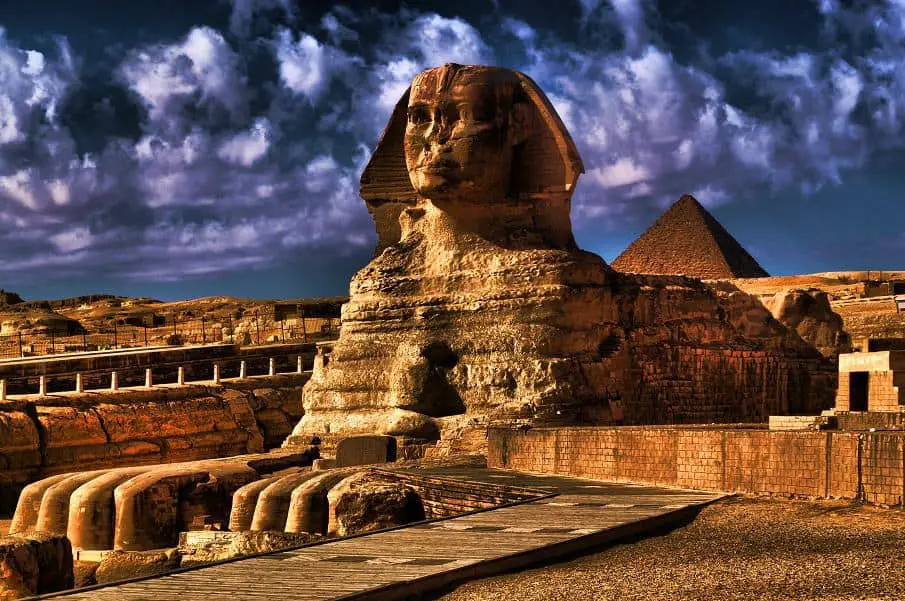
/////////////////////////////////////////////////////
Cush located in South Egypt on the River Nile. He became the father of the Ethiopians as well as the father of the Cushites through Nimrod who located on the Southern part of the Euphrates River. It is to be remembered that Nimrod is the founder of the Babylonian kingdom (Genesis 10th Chapter, 10th verse.) Mizriam located on the upper part of the River Nile, and he became the father of the Egyptians. Phut located in the Northern part of Africa. Canaan located in the land known as the old Palestine country, which is modern Turkey. Canaan became the father of the Canaanites (Genesis 10th Chapter, 15th, 16th, 17th, 18th and 19th verses). According to the Bible the above is the exact location of the first sons of Ham, and the question which naturally follows is, “Was civilization born in their land and given birth by Ham’s first offspring?” It is conceded by John Clark Ridpath and a few other writers on ancient history that the Egyptians were the fathers of civilization, [Pg 23]according to the chronology of Manetho, an Egyptian priest. Egypt was founded in the year B. C. 3892, and Menes was the first mortal King. The all important question now arises, “Were the Egyptians descendants of black men, or were they descendants of white men? Were they descendants of Ham or Shem?” It is well known that students claim to be divided in their opinion as to the original stock from which the ancient Egyptians came. Ridpath, among others, says they were neither Semitic nor Negro, but concludes his remarks on the origin of the Egyptians by saying that the ancient Egyptians were considered a branch of that part of the Cushite family, which settled in Asia. Probably the little matter of the Cushites being the grand-children of Ham slipped Ridpath’s mind, else his statements would not have been so conflicting, because he just says that they were not Negroes, but ends his argument by saying that they were a branch of the Cushite family of Asia.
According to the Biblical Gazette, the word “Egypt” is derived from the word Mizriam, and this word “Mizriam” was the name of one of the first sons of Ham (Genesis 10th Chapter, 6th verse). By the word “Egypt” being coined from the word “Mizriam,” it strengthens my contention that the Egyptian was descended from the black man. I will now dig down further into the rich earth of proof for more enlightenment out of the Book of Truth. By viewing the ancient Bible map of Africa and Asia, which map can be found in the back of the New Testament, one can readily pick out the spots upon which Shem, Ham and Japheth first located. You will notice that Mizriam, the second son of Ham, and the accredited father of the Egyptians located on the very spot, so to speak, where the great
Egyptians located on the very spot, so to speak, where the great City of Memphis was built by Menes, the first King of Egypt. Again you will notice that all[Pg 26] the names within African borders are names of the sons of Ham
City of Memphis was built by Menes, the first King of Egypt.
Hyksos or Shepherd Kings were Semite people. “White,” of course, and they comprised the 15th, 16th and 17th dynasties, which covered 511 years. Now, during this period, Jacob and his twelve sons and their families moved from Canaan to Egypt, and other Semite or whites from Asia did likewise, because the white man had begun to rule Egypt. At the 18th Dynasty, however, fortune turned against the white rulers of Egypt, and the black men or the Negroes regained possession of their country, and banished the whites from their land, except the Jews, whom they held as slaves. They reorganized the Kingdom with their own blood, “the blood of the Negro.” Aahmas was the first King after the whites were driven out, and his wife was Nefruari, the Ethiopian Princess, greatly celebrated for her dusky charms, her wealth and her[Pg 30]accomplishments. The beginning of this reorganization of a period is recorded in the 1st Chapter of the Book of Exodus, which shows that at the beginning of the slavery of the Jews, God told Abraham that his people would be held in bondage in Egypt for 400 years (Genesis 15th Chapter, 13th verse).
Those 400 years marked the period of Egypt’s most rapid and substantial progress, as Dr. Schmitz says in writing on ancient Egyptian history, those years were the most brilliant in Egypt’s record, and the period at which her art reached its highest point. It is but reasonable to suppose this to have been so, for the Shepherd, or “white Kings” had destroyed all of the former brilliancy of Egypt, and did not because they could not do anything to replace or imitate its grandeur or beauty. The black people when they regained possession of their Kingdom and again began to rule, made slaves of the Jews and compelled them to do all the heavy,
No comments:
Post a Comment